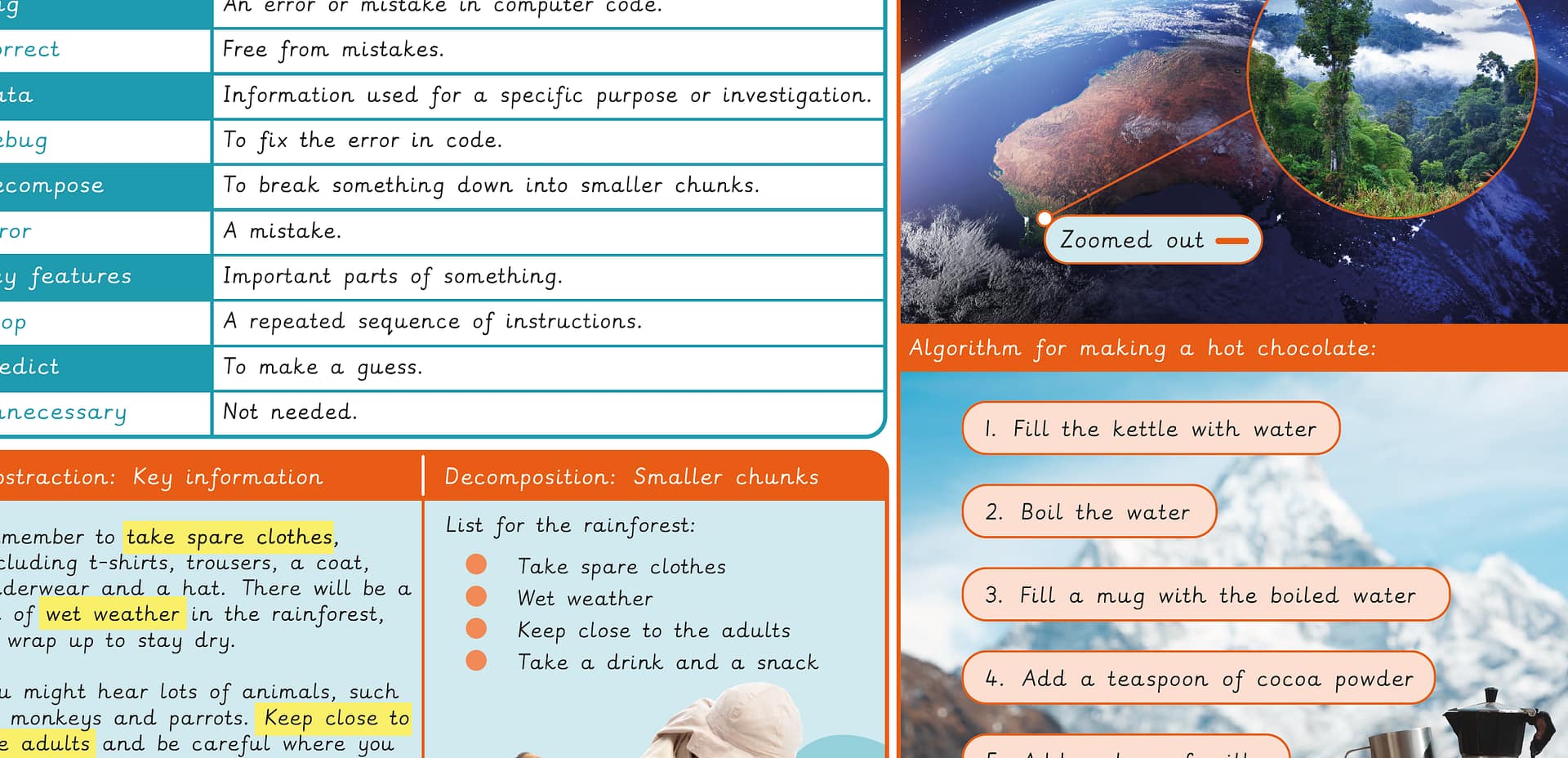
A Knowledge organiser that captures the essential knowledge and skills learnt throughout the unit Computing, Year 2, Programming 1: Algorithms and debugging.
This resource supports pupils as they explore the foundational concepts of algorithms and debugging. It introduces key vocabulary and concepts such as algorithm, bug, debug, decompose, loop, and predict, helping pupils understand how to create and refine step-by-step instructions. Through practical examples, like writing an algorithm for making hot chocolate, pupils learn to identify and correct errors in sequences. Ideal for consolidating essential knowledge, this will enhance pupils’ computational thinking and problem-solving skills.

A Knowledge organiser that captures the essential knowledge and skills learnt throughout the mixed-age unit Computing, Y2, Word processing.
This resource is designed to support children as they develop word-processing skills. It introduces key vocabulary and functions, such as using keyboard shortcuts, importing images and applying text effects like bold, underlined and italics. The resource also highlights the importance of touch typing, understanding keyboard buttons and practising essential editing techniques like copy, paste, undo and redo. It is perfect for consolidating foundational computing knowledge and fostering confidence in creating and editing digital documents.
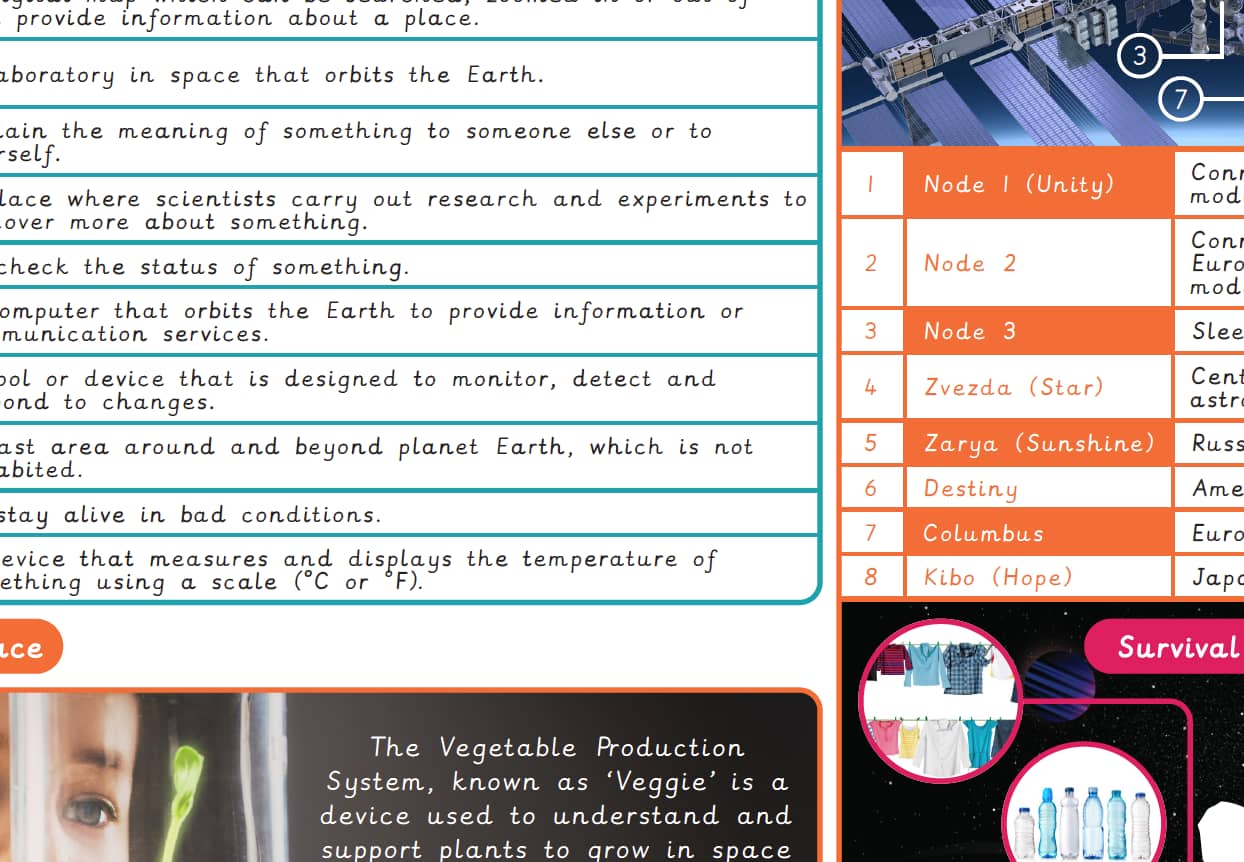
A Knowledge organiser that captures the essential knowledge and skills learnt throughout the unit Computing, Year 2, Data handling: International Space Station.
This resource supports pupils as they explore how data is collected, monitored, and interpreted aboard the International Space Station (ISS). It introduces key vocabulary and concepts such as satellite, sensor, thermometer, experiment, and digital content, helping pupils understand the role of technology in space exploration. The resource also highlights real-world applications, including the use of interactive maps and the ‘Veggie’ system for growing plants in space, to contextualise data handling skills. Ideal for consolidating essential knowledge, this enhances pupils’ understanding of data collection and analysis in a scientific context.
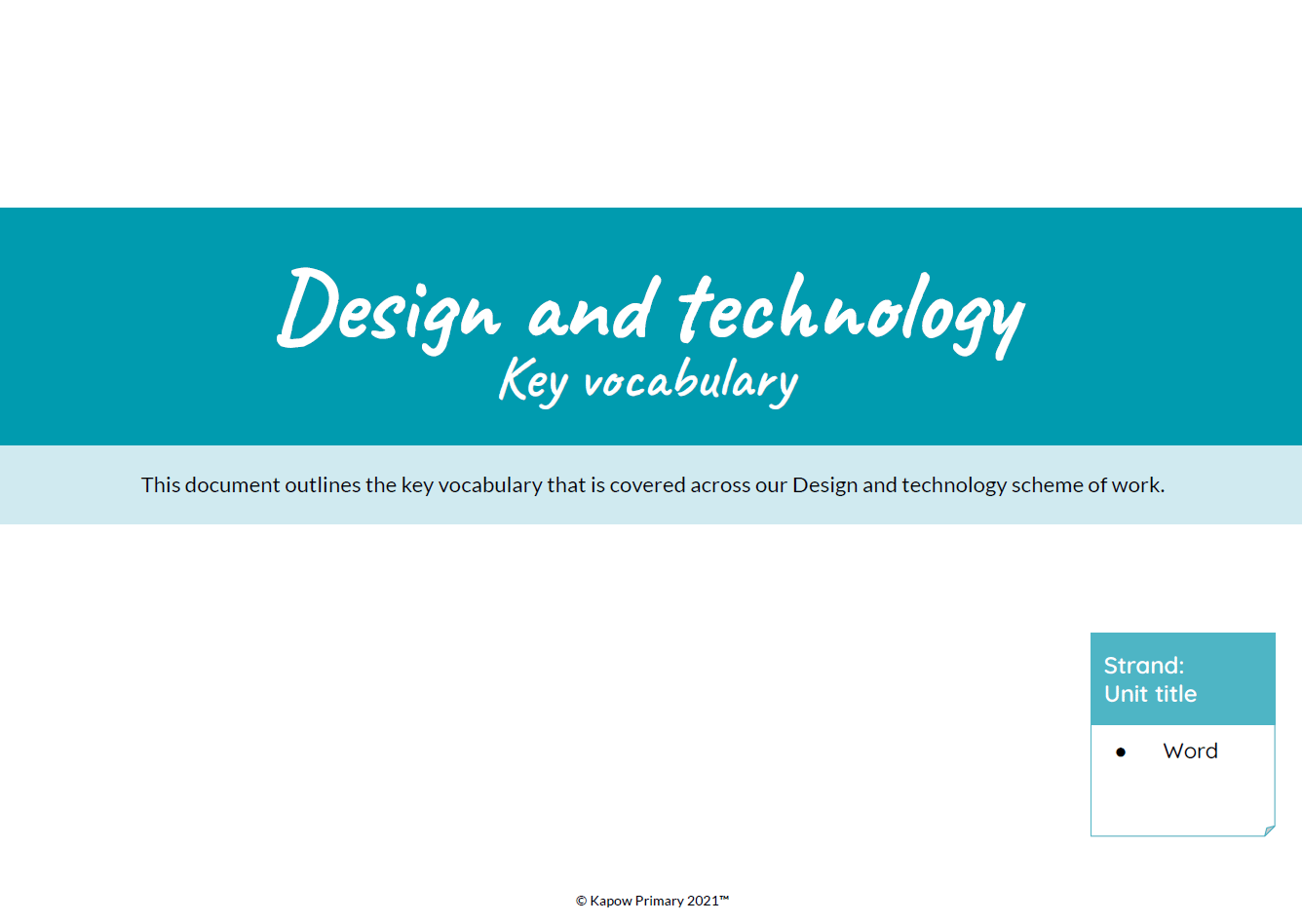
This key vocabulary display lists the keywords from all the units in the Design and technology scheme of work.
Key vocabulary consists of words the pupils are expected to retain and reuse in future units. Understanding these words enhances comprehension of the subject and supports progression in technical knowledge, design thinking and making skills. Consider displaying relevant keywords from previous terms or topics to reinforce learning.
Each unit also includes a Unit vocabulary display featuring essential and unit-specific keywords that support lesson delivery and classroom displays.
Design and technology scheme of work
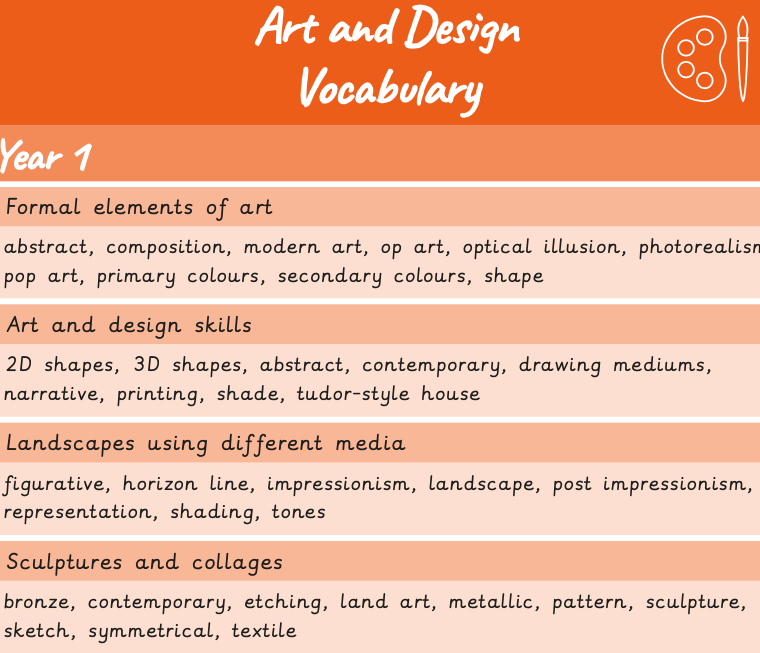
A reference document providing a clear progression of key vocabulary across the original Kapow Primary Art and Design scheme (now archived).
This resource outlines the essential subject-specific terms introduced from Year 1 to Year 6, helping teachers build learners’ art literacy over time. It supports vocabulary-rich teaching by offering age-appropriate terms aligned with each unit, from simple descriptive language in lower years to more technical and conceptual terms in upper KS2. This progression encourages consistent use of artistic language and supports pupils’ ability to talk about their work confidently and accurately.
Kapow Primary Art and Design original scheme (archived).
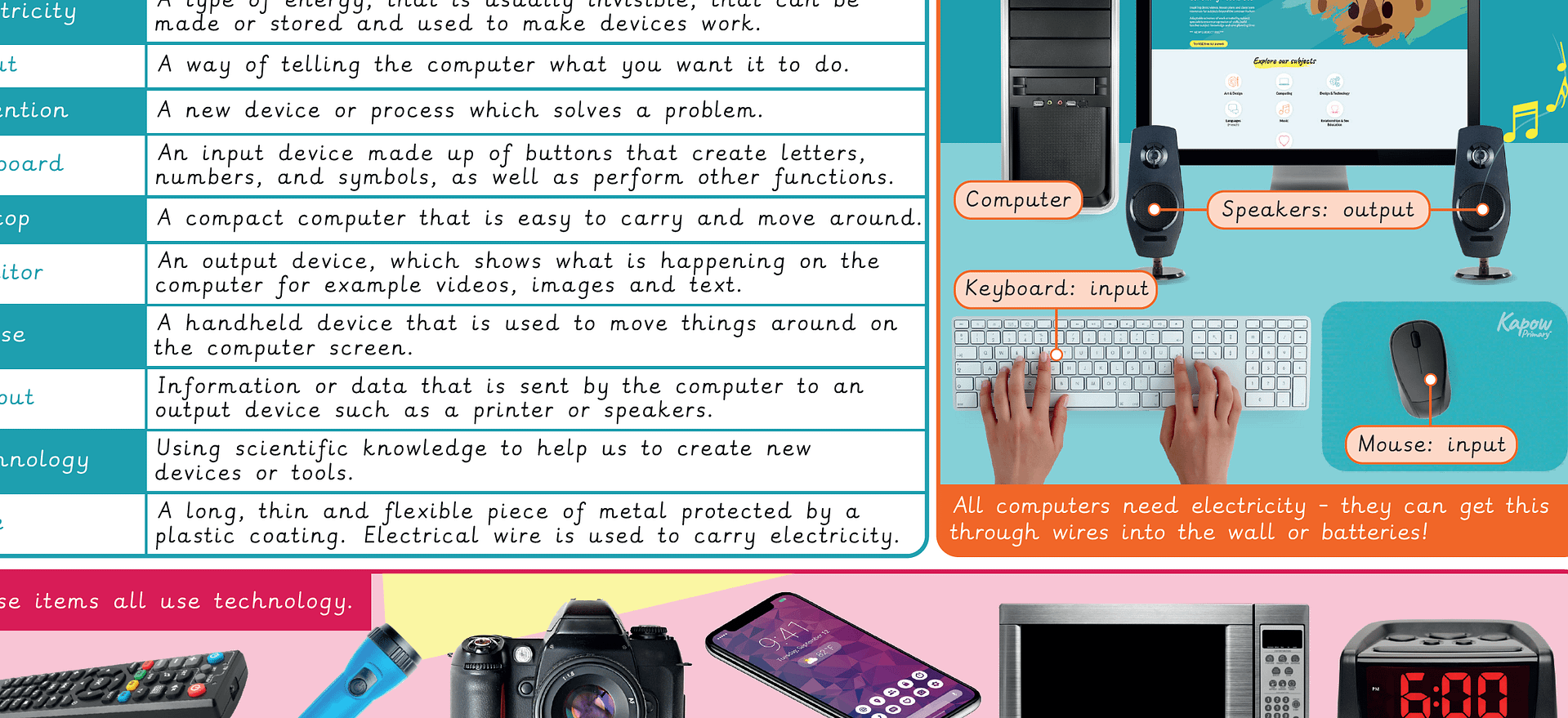
A Knowledge organiser that captures the essential knowledge and skills learnt throughout the unit Computing, Year 2, Computing systems and networks 1: What is a computer?
This Computing resource is designed to help learners understand what a computer is and how its different components function together. It introduces children to key hardware elements such as the mouse, keyboard, and monitor, and explains their roles within a system. The organiser also highlights the difference between inputs and outputs and supports pupils to identify devices used in everyday life. This resource is ideal for reinforcing foundational knowledge and developing digital literacy.
Computing scheme of work.
Year 2 Computing scheme of work.
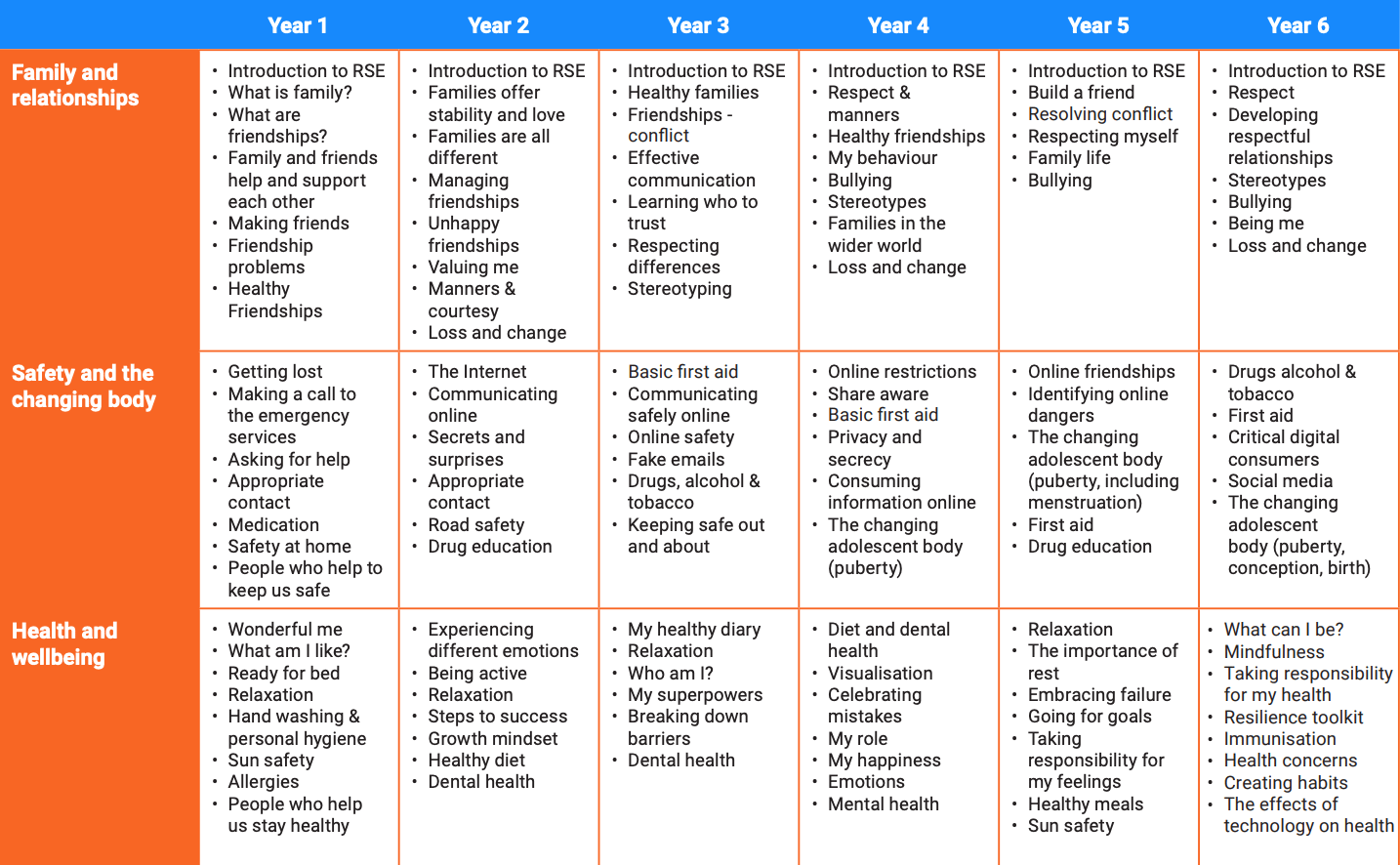
An overview for Kapow Primary’s RSE & PSHE scheme of work from Years 1-6. Content is divided into the following areas:
- Family and relationships
- Health and wellbeing
- Safety and the changing body
- Citizenship
- Economic wellbeing
- Identity
- Transition
Explore more of our RSE & PSHE scheme:
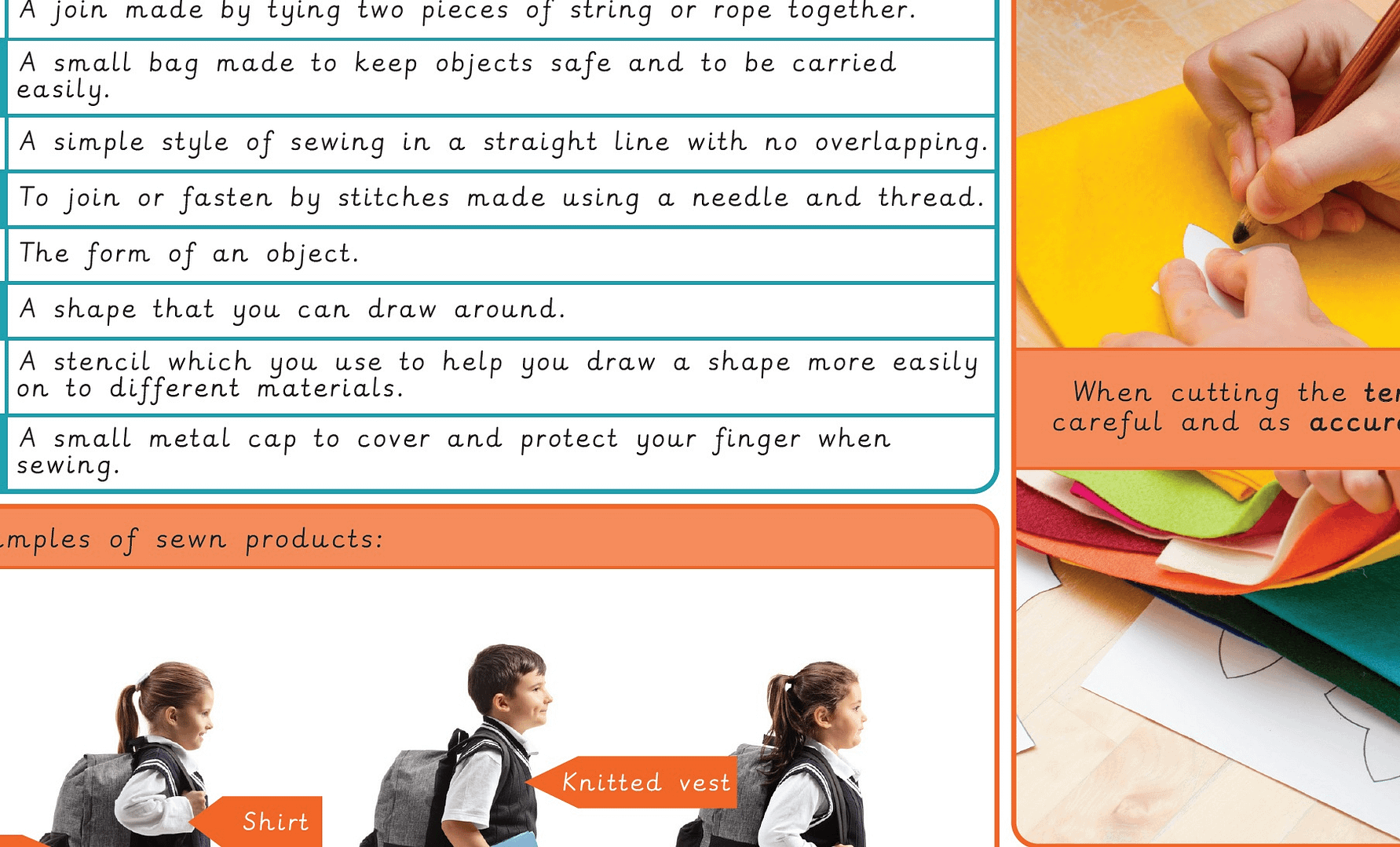
A Knowledge organiser that captures the essential knowledge and skills learnt throughout the Design and technology, Year 2, Textiles – Pouches.
This resource introduces the pupils to basic sewing techniques and textile design as they create their own pouches. Pupils will explore how to use fabric and templates to design small, functional bags for storing objects safely. Key vocabulary includes terms such as accurate, fabric, knot, pouch, running-stitch, and thimble, helping the pupils develop an understanding of sewing tools and methods. The organiser provides step-by-step guidance on skills such as threading a needle, tying a knot, and using a running stitch to sew materials together. It also emphasises the importance of planning, accuracy, and neatness when cutting fabric and stitching designs. Pupils are encouraged to carefully follow their template to ensure the correct shape and size of their pouch.
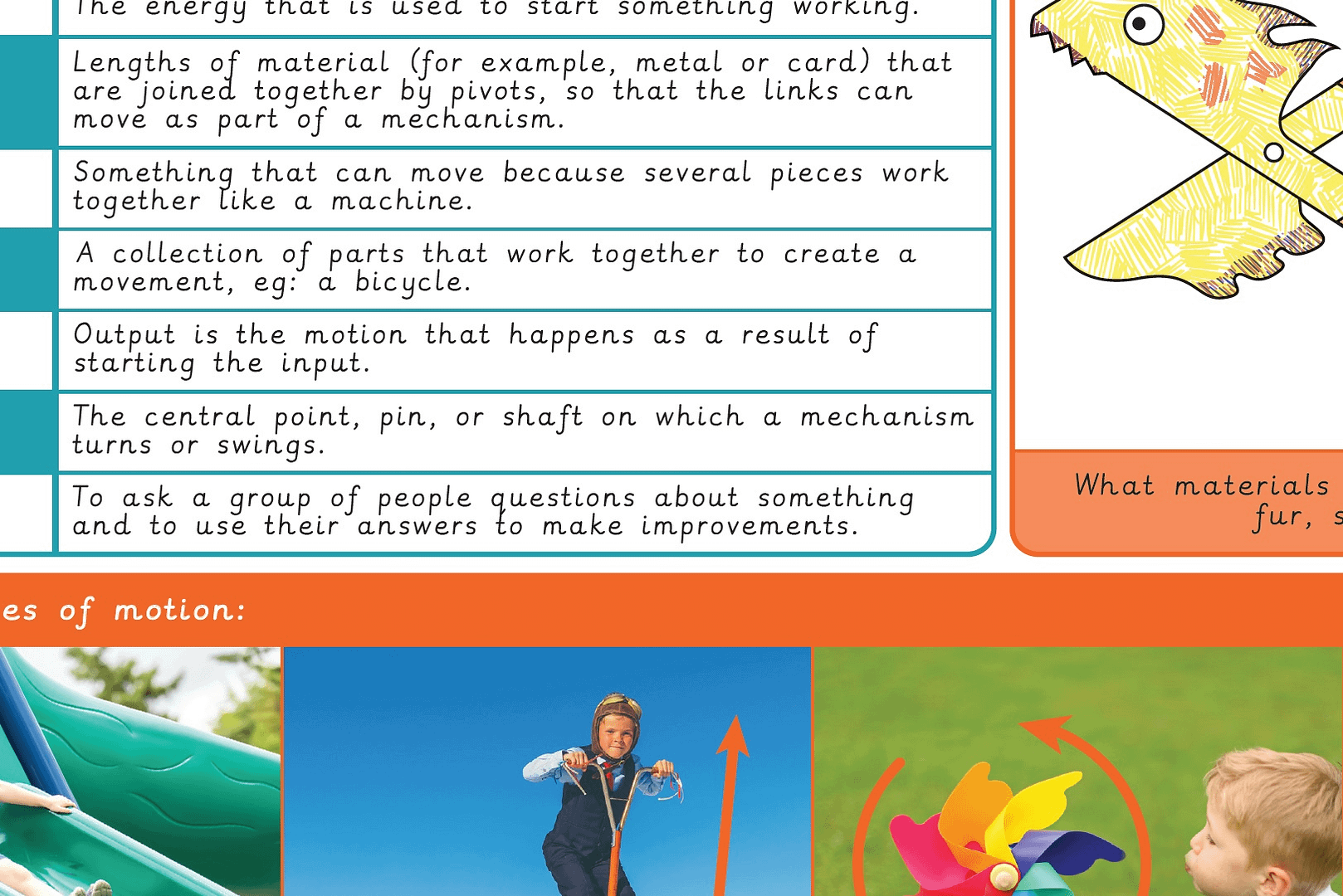
A Knowledge organiser that captures the essential knowledge and skills learnt throughout the Design and technology, Year 2, Mechanisms: Making a moving monster.
This resource introduces the pupils to the fundamentals of mechanical design by creating a moving monster. The pupils will explore how mechanisms like linkages and pivots can be used to create movement in designs. Key terms such as mechanism, linkage, pivot, input, output, and evaluation are explained to help the pupils understand how different parts work together to create motion. The organiser covers the four main types of motion—linear, reciprocating, rotary, and oscillating—providing clear examples and helping the pupils identify how these motions are applied in mechanical systems. Through practical activities, the pupils will design and construct a monster with moving parts, using creative materials to represent features like fur, scales, and claws.









